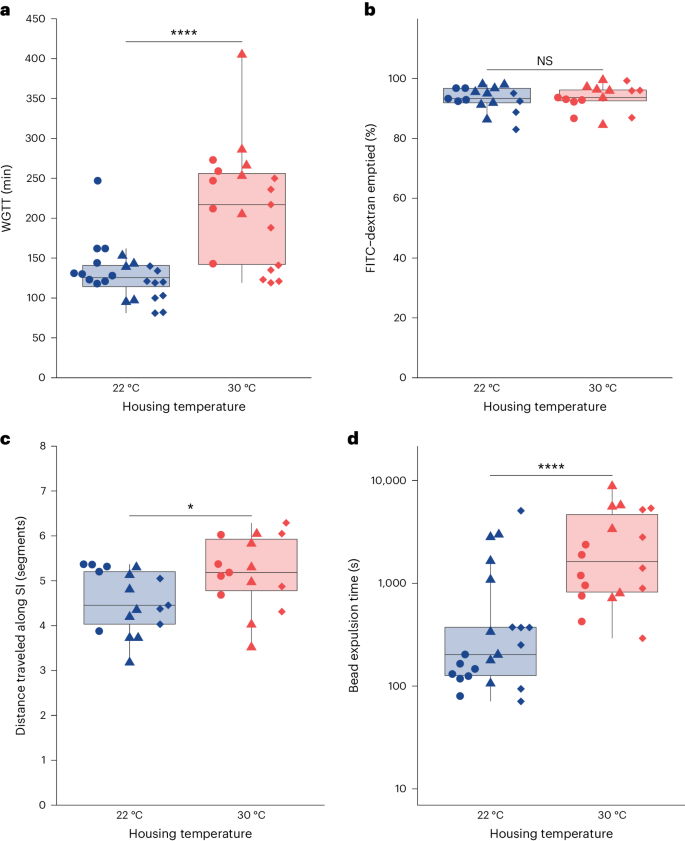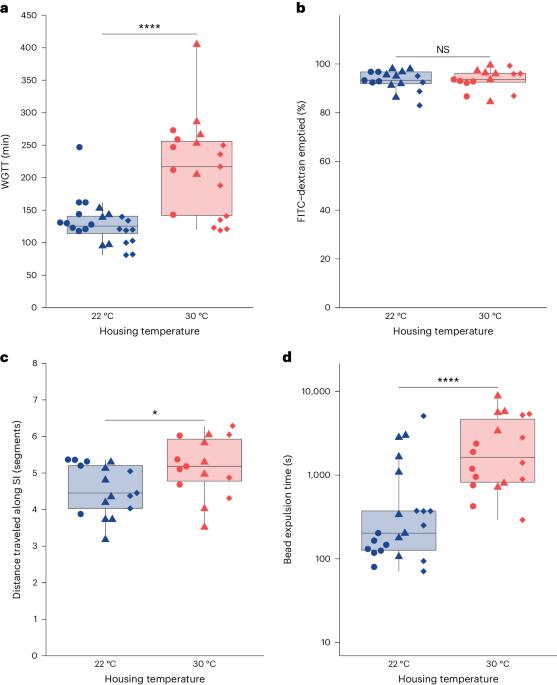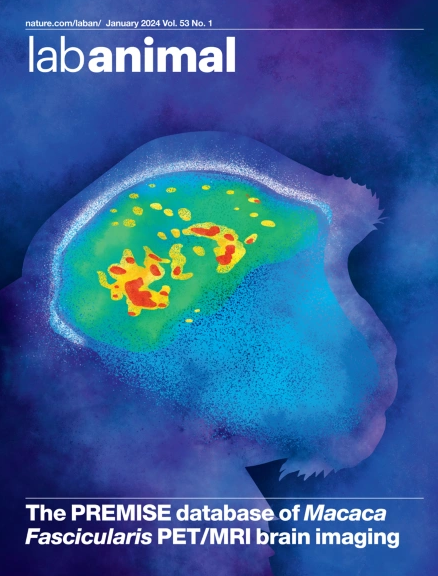Temperature-dependent differences in mouse gut motility are mediated by stress
IF 5.9
3区 农林科学
Q1 VETERINARY SCIENCES
引用次数: 0
Abstract
Researchers have advocated elevating mouse housing temperatures from the conventional ~22 °C to the mouse thermoneutral point of 30 °C to enhance translational research. However, the impact of environmental temperature on mouse gastrointestinal physiology remains largely unexplored. Here we show that mice raised at 22 °C exhibit whole gut transit speed nearly twice as fast as those raised at 30 °C, primarily driven by a threefold increase in colon transit speed. Furthermore, gut microbiota composition differs between the two temperatures but does not dictate temperature-dependent differences in gut motility. Notably, increased stress signals from the hypothalamic–pituitary–adrenal axis at 22 °C have a pivotal role in mediating temperature-dependent differences in gut motility. Pharmacological and genetic depletion of the stress hormone corticotropin-releasing hormone slows gut motility in stressed 22 °C mice but has no comparable effect in relatively unstressed 30 °C mice. In conclusion, our findings highlight that colder mouse facility temperatures significantly increase gut motility through hormonal stress pathways. The study reveals that raising mice at 22 °C boosts gut transit speed by two times compared to 30 °C, primarily due to stress signals from the hypothalamic–pituitary–adrenal axis and an increase of corticotropin-releasing hormone.


小鼠肠道蠕动的温度依赖性差异是由压力介导的
研究人员主张将小鼠饲养温度从传统的 ~22 °C 提高到小鼠热中性点 30 °C,以促进转化研究。然而,环境温度对小鼠胃肠道生理学的影响在很大程度上仍未得到探讨。在这里,我们发现在22 °C下饲养的小鼠整个肠道的转运速度几乎是在30 °C下饲养的小鼠的两倍,这主要是由于结肠转运速度增加了三倍。此外,两种温度下的肠道微生物群组成不同,但并不决定肠道运动的温度依赖性差异。值得注意的是,22 °C时来自下丘脑-垂体-肾上腺轴的应激信号增加,对肠道蠕动的温度依赖性差异起着关键作用。应激激素促肾上腺皮质激素释放激素的药理和遗传耗竭会减缓应激的 22 ℃ 小鼠的肠道蠕动,但对相对非应激的 30 ℃ 小鼠却没有类似的影响。总之,我们的研究结果突出表明,较低的小鼠设施温度会通过激素应激途径显著增加肠道蠕动。
本文章由计算机程序翻译,如有差异,请以英文原文为准。
求助全文
约1分钟内获得全文
求助全文
来源期刊

Lab Animal
农林科学-兽医学
CiteScore
0.60
自引率
2.90%
发文量
181
审稿时长
>36 weeks
期刊介绍:
LabAnimal is a Nature Research journal dedicated to in vivo science and technology that improves our basic understanding and use of model organisms of human health and disease. In addition to basic research, methods and technologies, LabAnimal also covers important news, business and regulatory matters that impact the development and application of model organisms for preclinical research.
LabAnimal's focus is on innovative in vivo methods, research and technology covering a wide range of model organisms. Our broad scope ensures that the work we publish reaches the widest possible audience. LabAnimal provides a rigorous and fair peer review of manuscripts, high standards for copyediting and production, and efficient publication.
 求助内容:
求助内容: 应助结果提醒方式:
应助结果提醒方式:


